Trending
The artist’s way
Edwina Sandys on Soho, sculptures and her famous lineage as Churchill’s granddaughter
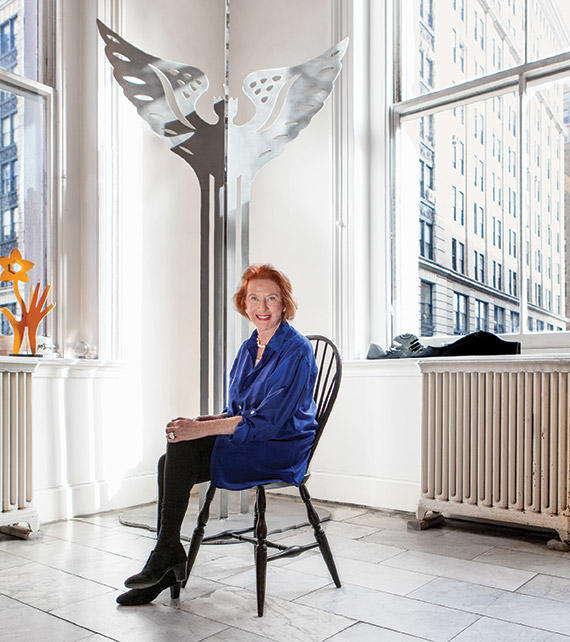
“This is Margaret Thatcher in the bathtub,” said the artist Edwina Sandys, pointing to one of her early paintings while seated in her sprawling Soho loft. The acrylic, titled “Ich Lerne Deutsch,” depicts the Iron Lady as a white figure soaking in a multicolored bubble bath with a book called “Teach Yourself German.” It wasn’t done from life, she reassures.
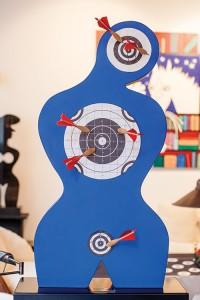 “I made this at the time Britain was going into Europe,” Sandys said of Britain’s “plunge” into the European Union. She enjoys taking a satirical look at Westminster’s top brass—a world with which she is very familiar. For one, Edwina knew Thatcher, as well as former Prime Minister John Major. Her sculptures have been commissioned by the United Nations and she has presented works to both Ronald Reagan and Mikhail Gorbachev. But unlike many other artists, it wasn’t cutting social commentary that first connected Sandys with the upper echelons of politics. Instead, Sandys was born into this: Her parents were Duncan Sandys, a conservative Member of Parliament and Diana Churchill, the eldest daughter of Sir Winston and Clementine Churchill.
“I made this at the time Britain was going into Europe,” Sandys said of Britain’s “plunge” into the European Union. She enjoys taking a satirical look at Westminster’s top brass—a world with which she is very familiar. For one, Edwina knew Thatcher, as well as former Prime Minister John Major. Her sculptures have been commissioned by the United Nations and she has presented works to both Ronald Reagan and Mikhail Gorbachev. But unlike many other artists, it wasn’t cutting social commentary that first connected Sandys with the upper echelons of politics. Instead, Sandys was born into this: Her parents were Duncan Sandys, a conservative Member of Parliament and Diana Churchill, the eldest daughter of Sir Winston and Clementine Churchill.
Growing up in London, she spent her school holidays at Chartwell, the Churchill family estate in Kent—a place she’s immortalized in a cheeky lithograph called simply “Chartwell.” The print juxtaposes a colorless Winston Churchill seated with a brush and a blank easel in front of his lushly landscaped retreat, looking as if he is going to take a stab at painting the massive old house. The country home, depicted as a swirl of earthy greens, yellows, reds and browns, looks like it might swallow him.
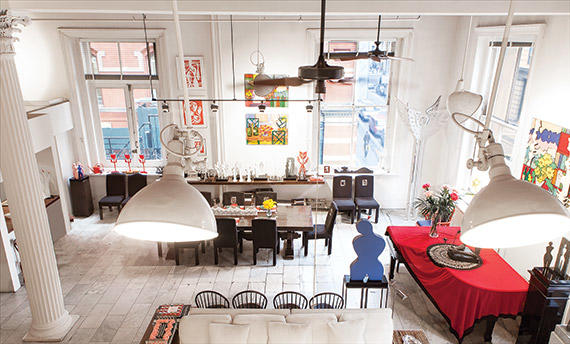
Sandys is reluctant to speak of her grandfather, whom she clearly holds in the highest esteem. However, in the definitive book on her work, “Edwina Sandys Art,” she recalls evenings at Chartwell, “when the mood had mellowed, with the brandy and cigars, Grandpapa would frequently hold the table spellbound as he recited poetry until tears came to his eyes.”
Sandys is lithe, and a ginger like her grandfather. She’s just as theatrical, too. When, after 15 minutes or so, she came out of her bedroom for this interview, she headed straight for the kitchen brandishing a bottle of red Louboutin nail polish. She began carefully painting her nails as a reporter and photo crew looked on. “Red is my favorite color,” she added. “You can’t beat red for drama.”
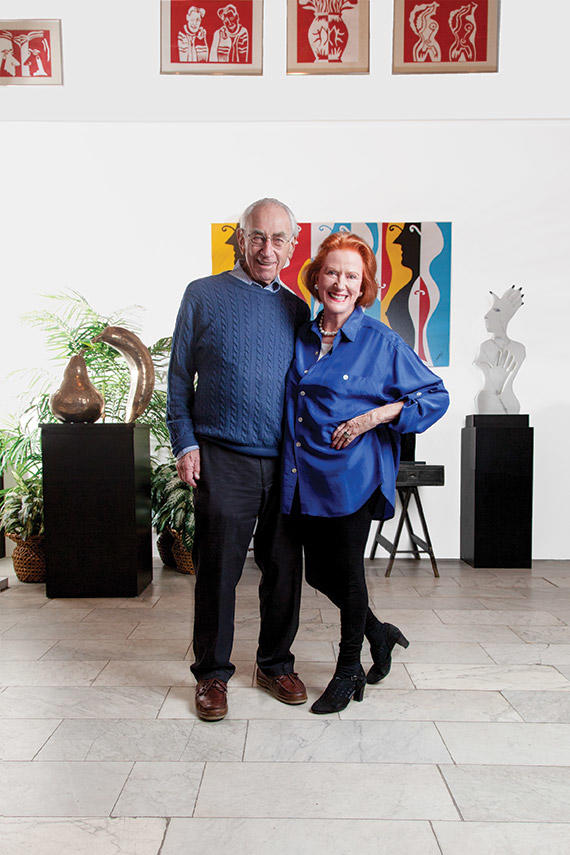
That “drama” is evident the minute you enter the loft from the elevator. The entire foyer is painted a bold lipstick red, and the effect is akin to a matador inviting visitors to charge full-steam inside. The foyer leads to a small gallery where the walls are jam-packed with her framed red and white prints. From there, a low-ceilinged hallway opens into the great room—a massive, open space filled with Sandys’ mixed-media work and confetti-colored paintings. Of the hundreds of works of art on display throughout the home, only one stands out as not being a Sandys original: a large Renaissance landscape with gentle chiaroscuro that Sandys’ husband, architect Richard Kaplan, inherited.
Sandys met Kaplan in 1984 on a trip to the Hamptons and they married not long after. For years, they lived at his apartment on East 66th Street, but as the art piled up, the couple set out to find an authentic artist’s live/work space. In 1995, they purchased a bewitching 19th-century jewelry showroom with marble floors and Corinthian columns — it was also the location of the first season of MTV’s “The Real World” in 1992.
Kaplan set to work transforming the space into a 6,500-square foot, five-bedroom duplex, which became Sandys’ workspace and showroom. (The prime Soho address, at the corner of Broadway and Prince Street, was briefly on the market last year asking $10.9 million.)
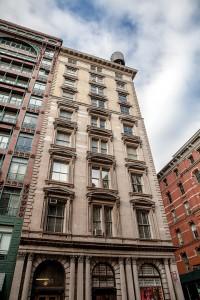 “I’ve been here [in Soho] for about 20 years, and it has changed,” Sandys said. “I think that a lot of the side streets have become really wonderful. I like the high-end stores and I like the little start-up fashion shops. But I think the trouble is that some of the big stores are not so interesting because you find them everywhere. It makes the neighborhood less interesting.”
“I’ve been here [in Soho] for about 20 years, and it has changed,” Sandys said. “I think that a lot of the side streets have become really wonderful. I like the high-end stores and I like the little start-up fashion shops. But I think the trouble is that some of the big stores are not so interesting because you find them everywhere. It makes the neighborhood less interesting.”
Life in New York City has helped catapult Sandys to a covetable height in the ultra- competitive, increasingly political art world. Today, Sandys’ work is in the permanent collections of the Tate and the Brooklyn Museum, and has been shown at galleries across the globe. But success as an artist wasn’t by any means written into her cards. As a young woman, growing up at a time when Oxbridge colleges and parliament largely shunned women, Sandys struggled to find a shoe that fit in her larger-than-life lineage.
“All my family had pretty well been in politics: my father, uncle and grandfather. And I thought, ‘What can I do? What can I do that’s not just being a nice lady, a nice friend and everything?’” Sandys said. “I had written a novel [“Truth Lies Somewhere in Between”]. I thought at first that I would like to be a TV anchor, but that was far too scary. And then I thought I might try going into parliament. I did try.”
“But my husband at the time [former conservative MP Piers Dixon] was also going to go into parliament, and they wanted me to be the nice lady and help him with all the events,” Sandys shrugs. She seems to feel that it was just as well. After all, it wasn’t until she gave up on achieving political office that she really began to paint and sculpt seriously.
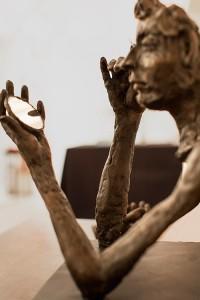 “I was about 30 when I actually started making art,” Sandys said. “I did some paintings and a friend of mine had a restaurant in Chelsea in London. All his paintings had been stolen the week before and he said he would love to have mine. All of them sold. It was very exciting and I thought, ‘That went well, why not continue with that?’”
“I was about 30 when I actually started making art,” Sandys said. “I did some paintings and a friend of mine had a restaurant in Chelsea in London. All his paintings had been stolen the week before and he said he would love to have mine. All of them sold. It was very exciting and I thought, ‘That went well, why not continue with that?’”
It was “continuing with that,” — producing art, showing it and building her reputation in Europe — that brought Sandys to New York City in the mid-1970s, where her first solo exhibition at the Hammer Galleries attracted the likes of Salvador Dali.
During that time, Sandys developed a high-contrast style; her prints and paintings typically feature white, almost cartoonish, figures against a colorful backdrop. Similarly, her sculptures play with positive and negative space.
Her art often has something to say about sex or about human relations — but if there’s an overarching theme to Sandys’ oeuvre, it’s liberation and femininity. Nearly all of her works feature a rather straight- forward message, best summarized by the title of her sculpture, “Woman Free.” The 15-foot marble work contrasts a smooth female figure against the rough rectangular marble block from which she was carved. She stands free, and polished, as if she can go anywhere. “It’s one of my iconic, classic pieces,” Sandys said.
Above all, Sandys’ work is humorous and perceptive, as only someone looking from the inside out can be. In the introduction to “Edwina Sandys Art,” English artist, historian and poet Sir Roland Penrose writes, “When you meet Edwina Sandys, she looks straight through you as easily as if you were a slice of Gruyere.” More aptly, her coat of arms has given her the privilege to poke fun at power, along with the shrewdness to make it stick.




